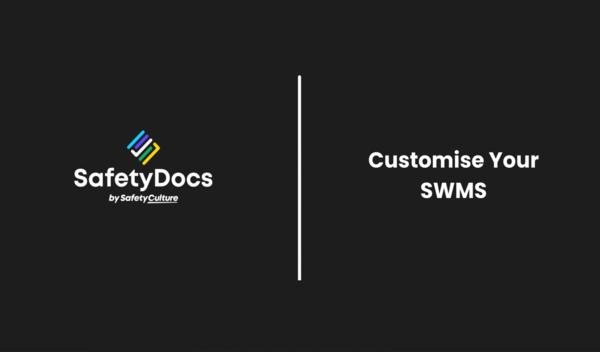Air Conditioning Installation Safe Work Method Statement
- Instant Document Delivery via Email.
- Add to your existing management system.
- Can assist in ensuring workers are adequately trained.
- Customisation instructions provided.
- Microsoft Word Format (Fully editable).
- Only pay once (no subscriptions required).
Air Conditioning Installation Safe Work Method Statement (SWMS)
The Air Conditioning Installation Safe Work Method Statement (SWMS) covers installing, maintaining, or repairing air conditioning components. It addresses the associated risks and outlines necessary precautions for compliance with safety standards.
Job Steps Covered in Air Conditioning Installation SWMS
- Planning & Preparation: Establish a secure work environment by evaluating the project scope and planning safety measures.
- Arrival On-site & Risk Assessment: Detect site-specific hazards with an initial risk assessment upon arrival.
- Work Area Set-up: Ensure all necessary equipment and barriers are installed to create a safe and efficient work area.
- Environment: Consider environmental factors that could impact the safety of the installation.
- Housekeeping: Maintain a clean and organised worksite to prevent accidents.
- Manual Tasks: Describes safe methods for manual handling to minimise injury risks.
- Working with Powered & Non-powered Tools: Promote safe use and maintenance of tools to prevent accidents.
- Materials Delivery: Manage safe control measures for on-site material handling and storage.
- Install Indoor Unit, Ducting & Drainpipes: Follow manufacturers instructions for safe indoor unit installation.
- Install Outdoor Unit: Details the procedure for outdoor unit installation, including safety measures.
- Drilling, Cutting or Grinding Masonry: Outlines safety precautions for masonry work.
- Refrigerant Piping Connection: Ensure correct method for connecting refrigerant piping.
- Electrical Wiring: Focus on safe electrical wiring practices.
- Testing & Commissioning: Conduct thorough system testing and commissioning to confirm safety and performance.
- On Completion: Specify final checks and clean-up procedures.
- Emergency Response: Establish a clear action plan for emergencies.
Each purchase of our SWMS comes with a complimentary copy of the Legislation & Codes of Practice Reference List, valued at $19.95. This valuable resource provides an up-to-date overview of relevant laws and standards, further supporting your compliance efforts.
Key Features of the SWMS
- Broad Safety Measures: Covers comprehensive safety measures for every installation stage.
- Silica Dust Controls: Aligns with the Code of Practice for managing silica dust.
- Compatible with All HVAC Systems: Applicable safety measures for any HVAC installation.
- Safety for Indoor and Outdoor Installations: Protocols for both settings.
- Regulatory Compliance: Meets industry regulations and safety standards.
Who is it Suitable For?
This SWMS is indispensable for HVAC technicians, facility managers, and construction companies aiming to uphold high safety standards and regulatory compliance during air conditioning system installations.
Secure your team's safety and compliance with our Air Conditioning Installation SWMS. Don't wait, improve your site safety today!
- Instant Document Delivery via Email.
- Add to your existing management system.
- Can assist in ensuring workers are adequately trained.
- Customisation instructions provided.
- Microsoft Word Format (Fully editable).
- Only pay once (no subscriptions required).
Air Conditioning Installation Safe Work Method Statement (SWMS)
The Air Conditioning Installation Safe Work Method Statement (SWMS) covers installing, maintaining, or repairing air conditioning components. It addresses the associated risks and outlines necessary precautions for compliance with safety standards.
Job Steps Covered in Air Conditioning Installation SWMS
- Planning & Preparation: Establish a secure work environment by evaluating the project scope and planning safety measures.
- Arrival On-site & Risk Assessment: Detect site-specific hazards with an initial risk assessment upon arrival.
- Work Area Set-up: Ensure all necessary equipment and barriers are installed to create a safe and efficient work area.
- Environment: Consider environmental factors that could impact the safety of the installation.
- Housekeeping: Maintain a clean and organised worksite to prevent accidents.
- Manual Tasks: Describes safe methods for manual handling to minimise injury risks.
- Working with Powered & Non-powered Tools: Promote safe use and maintenance of tools to prevent accidents.
- Materials Delivery: Manage safe control measures for on-site material handling and storage.
- Install Indoor Unit, Ducting & Drainpipes: Follow manufacturers instructions for safe indoor unit installation.
- Install Outdoor Unit: Details the procedure for outdoor unit installation, including safety measures.
- Drilling, Cutting or Grinding Masonry: Outlines safety precautions for masonry work.
- Refrigerant Piping Connection: Ensure correct method for connecting refrigerant piping.
- Electrical Wiring: Focus on safe electrical wiring practices.
- Testing & Commissioning: Conduct thorough system testing and commissioning to confirm safety and performance.
- On Completion: Specify final checks and clean-up procedures.
- Emergency Response: Establish a clear action plan for emergencies.
Each purchase of our SWMS comes with a complimentary copy of the Legislation & Codes of Practice Reference List, valued at $19.95. This valuable resource provides an up-to-date overview of relevant laws and standards, further supporting your compliance efforts.
Key Features of the SWMS
- Broad Safety Measures: Covers comprehensive safety measures for every installation stage.
- Silica Dust Controls: Aligns with the Code of Practice for managing silica dust.
- Compatible with All HVAC Systems: Applicable safety measures for any HVAC installation.
- Safety for Indoor and Outdoor Installations: Protocols for both settings.
- Regulatory Compliance: Meets industry regulations and safety standards.
Who is it Suitable For?
This SWMS is indispensable for HVAC technicians, facility managers, and construction companies aiming to uphold high safety standards and regulatory compliance during air conditioning system installations.
Secure your team's safety and compliance with our Air Conditioning Installation SWMS. Don't wait, improve your site safety today!





